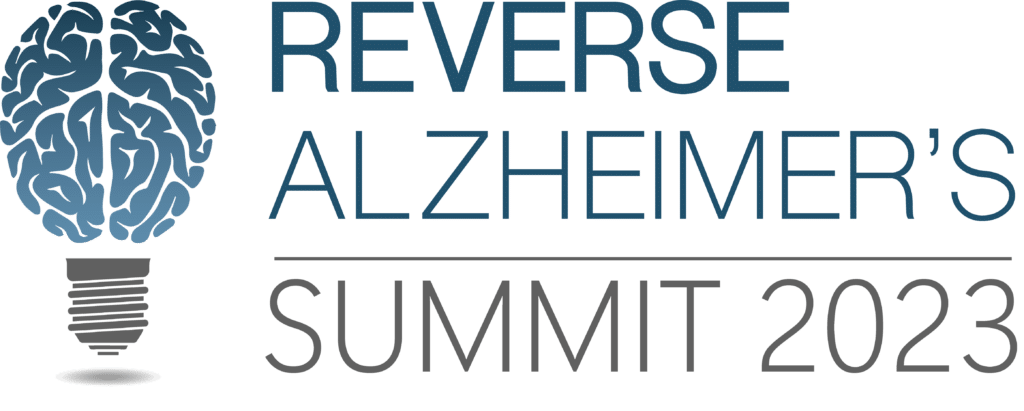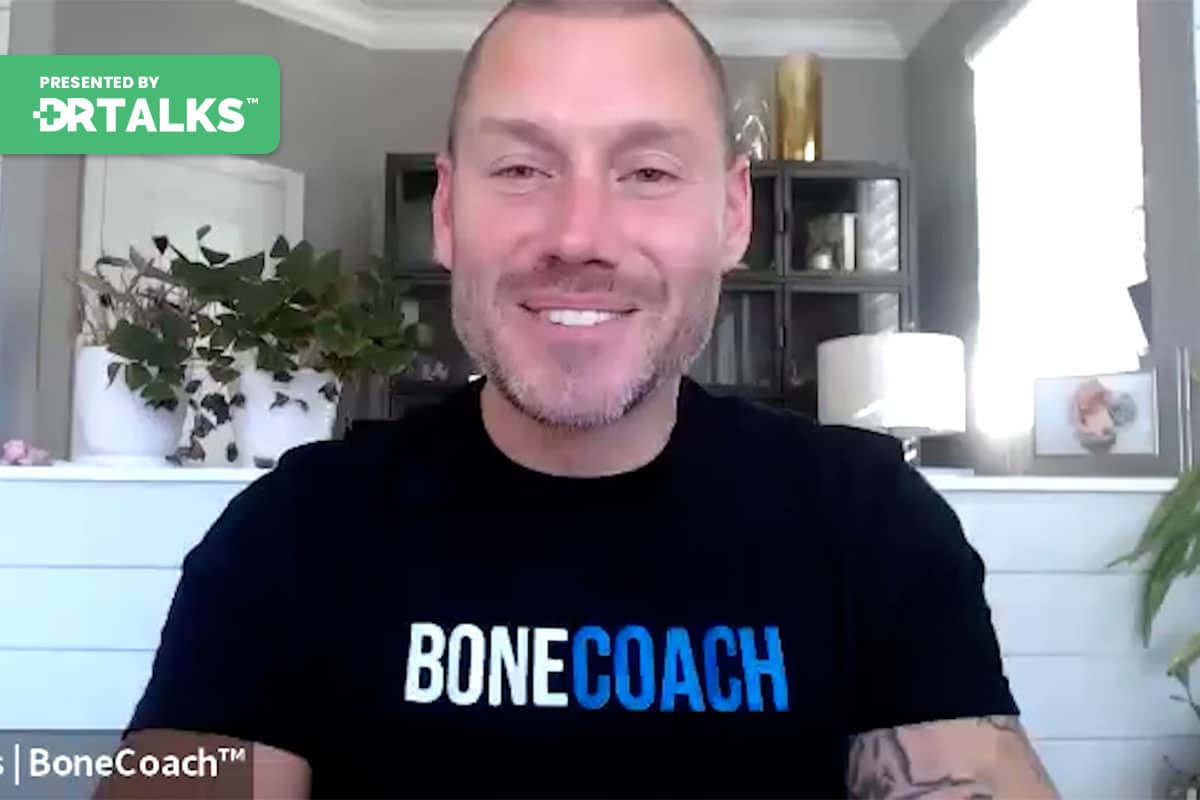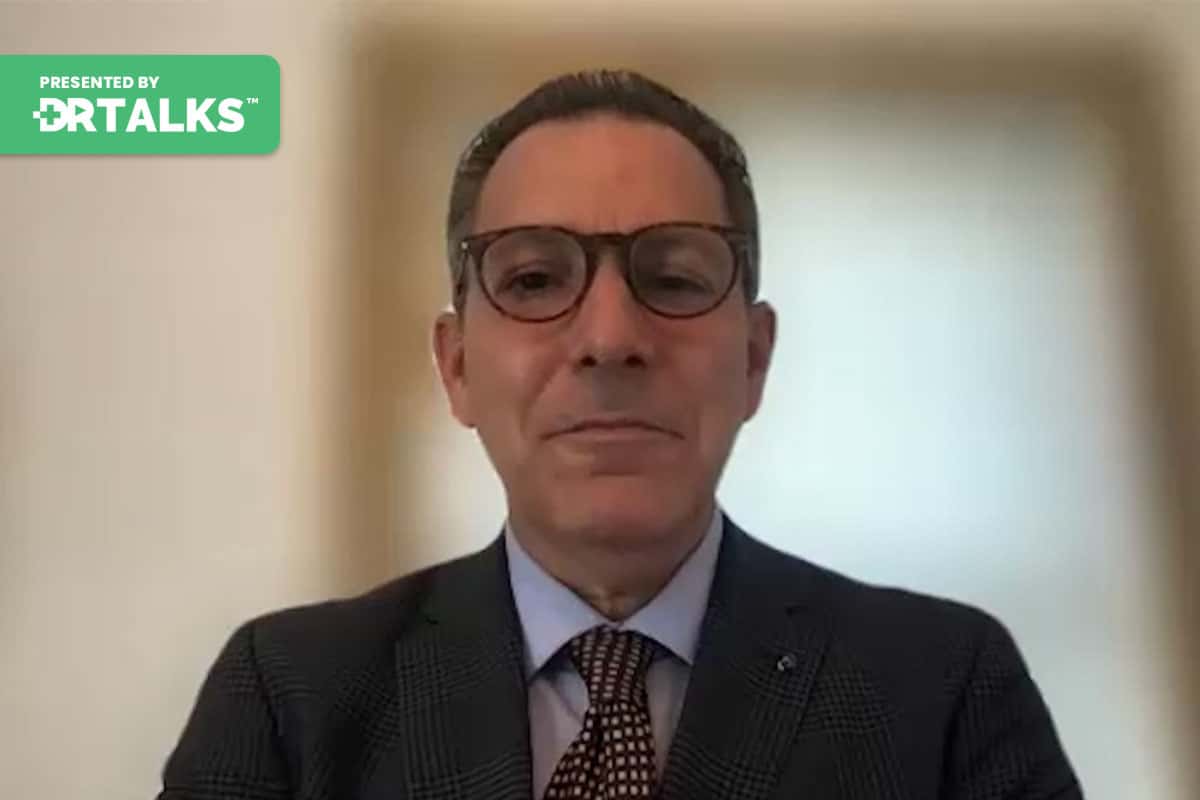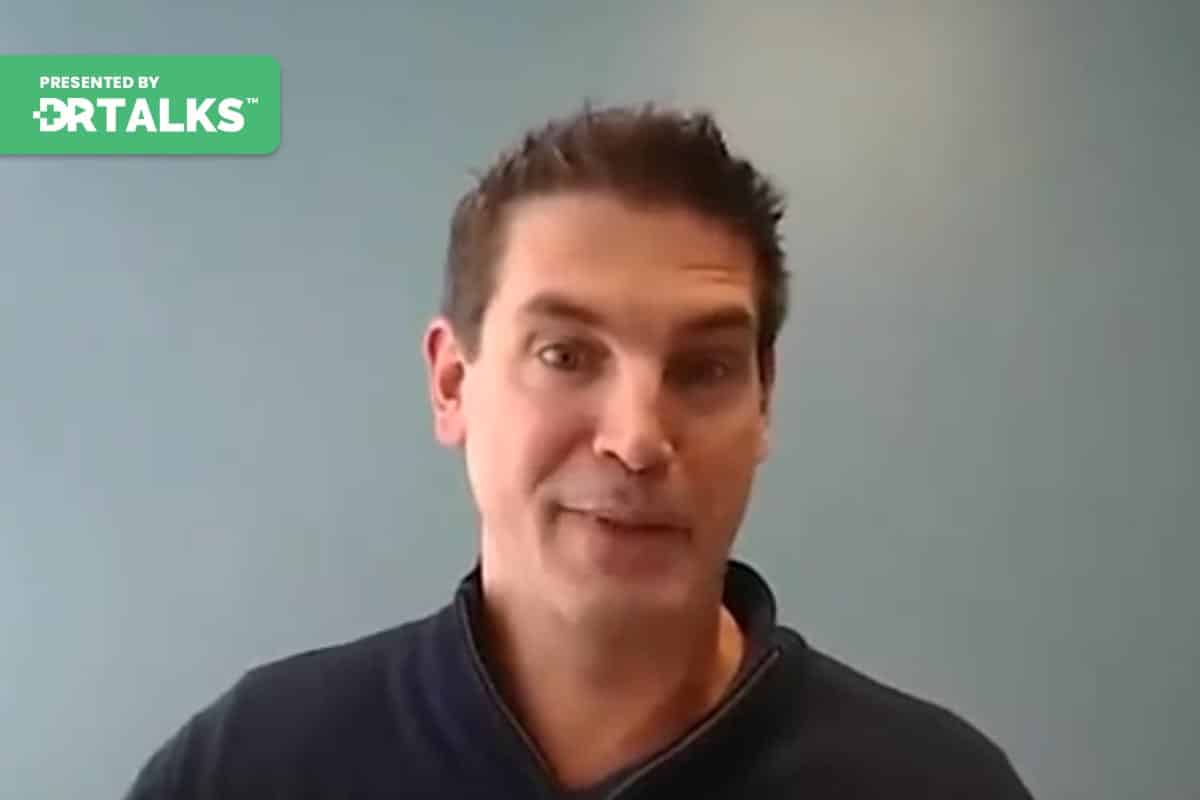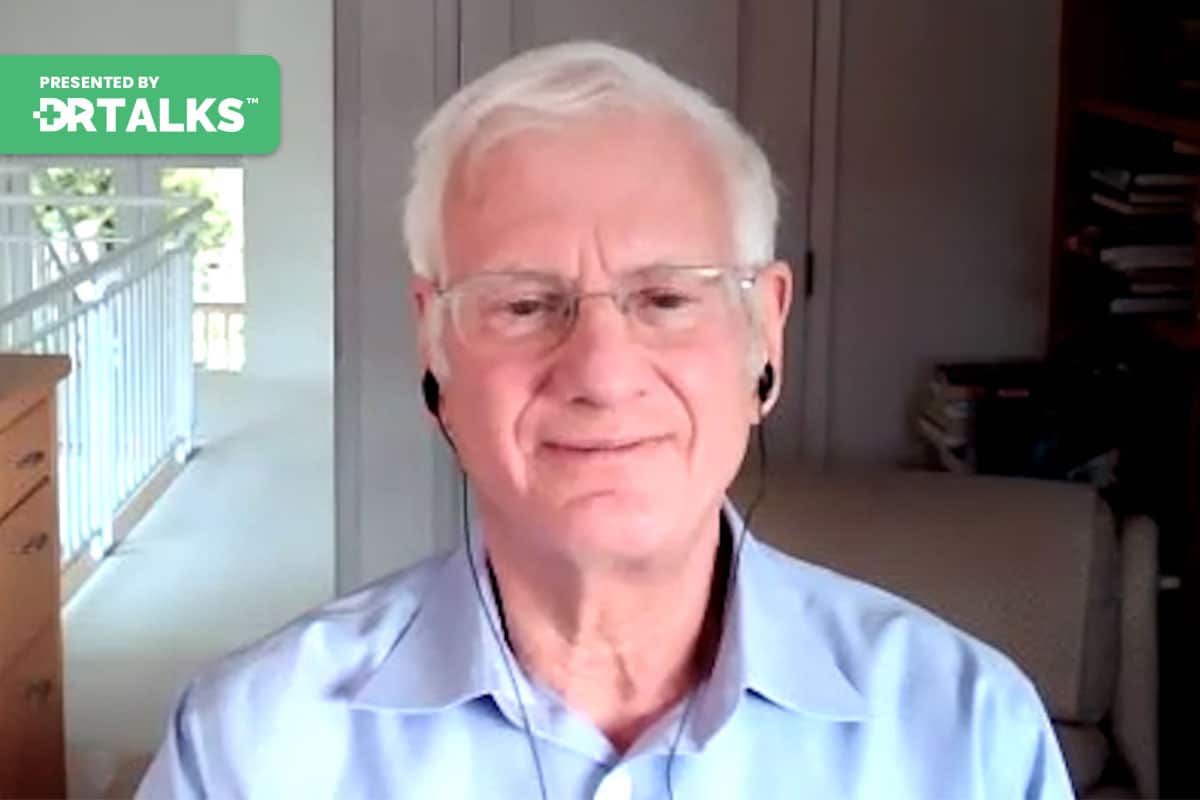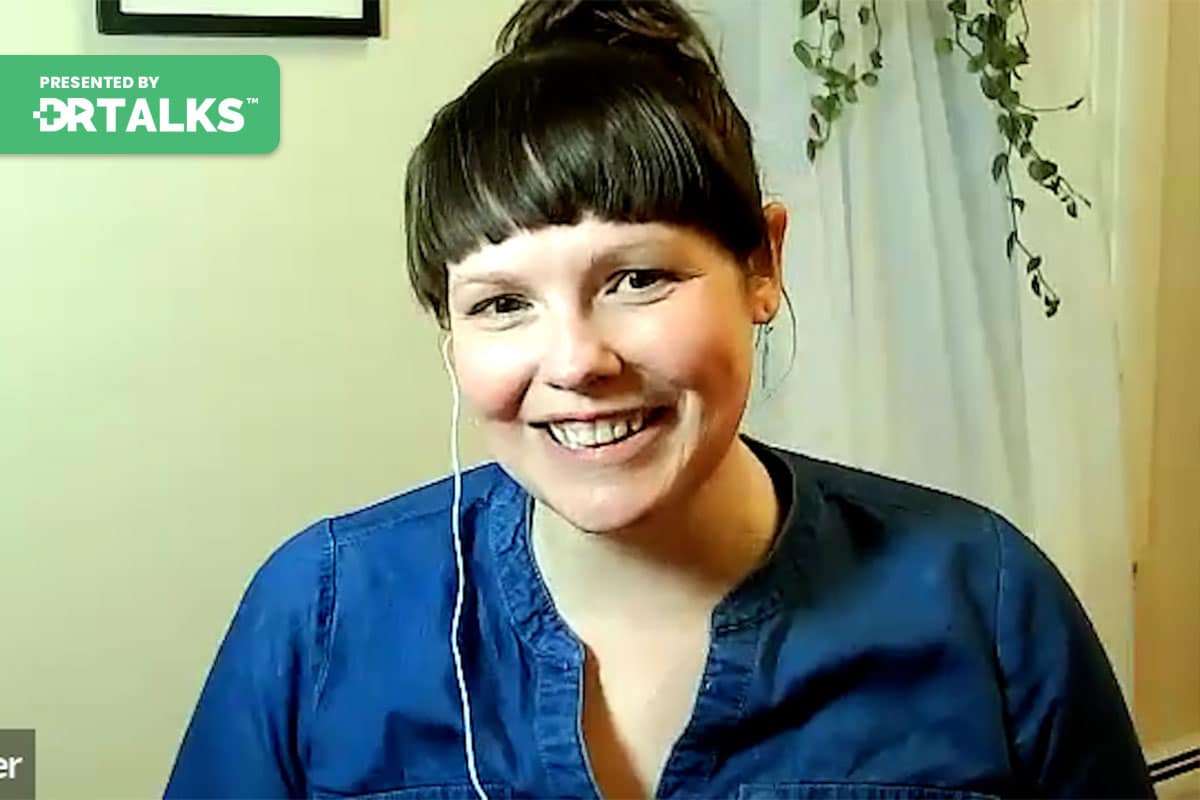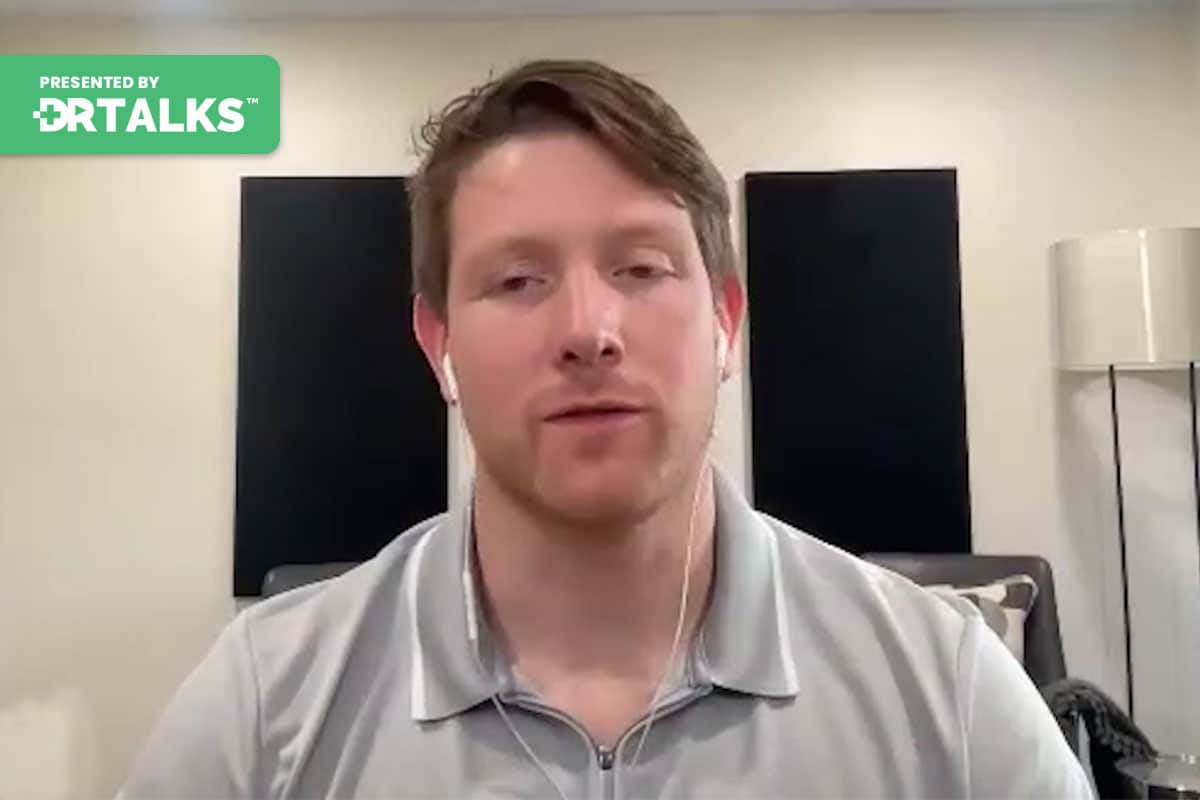Join the discussion below

Dr. Heather Sandison is the founder of Solcere Health Clinic and Marama, the first residential care facility for the elderly of its kind. At Solcere, Dr. Sandison and her team of doctors and health coaches focus primarily on supporting patients looking to optimize cognitive function, prevent mental decline, and reverse... Read More
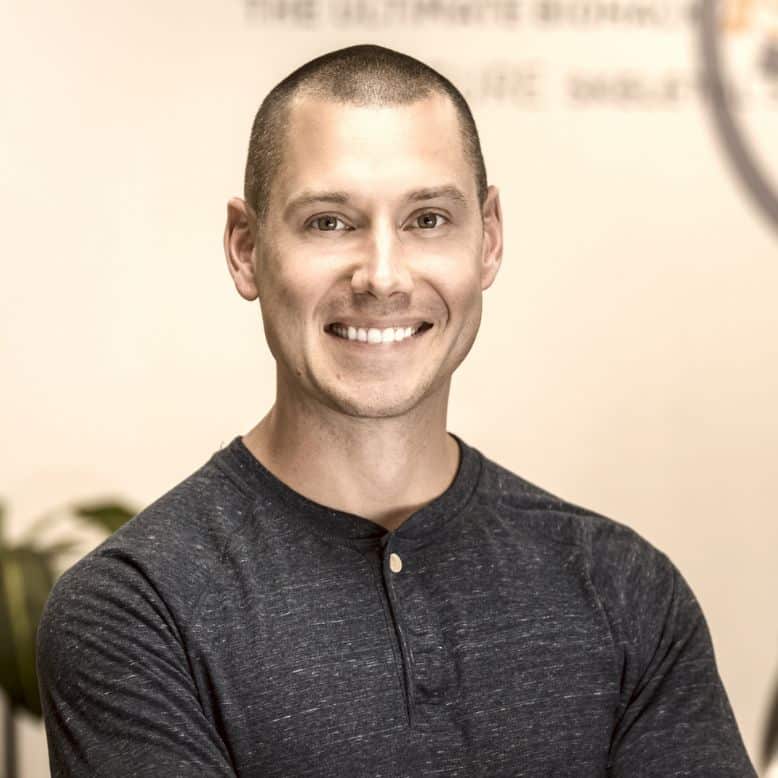
Kevin Ellis, better known as Bone Coach™, is a certified Integrative Nutrition health coach, podcaster, YouTuber, bone health advocate, and the founder of BoneCoach.com. After an osteoporosis diagnosis in his early 30s, he realized just how challenging it can be for the average person to make sense of what needs... Read More
Kevin Ellis discusses how he got started on his journey to help women with osteopenia and osteoporosis
- Understand osteopenia and osteoporosis, the causes, how common it is, and how to know if you have it
- Become knowledgeable about the standard treatment protocol for osteoporosis and how it might not be enough.
- Learn about medicines prescribed for osteoporosis, their effect on your bones, and the risks/side effects for short and long-term use
- Discover the connection between gut health and bone health
Heather Sandison, ND
Welcome to this episode of the Reverse Alzheimer’s Summit. I’m your host, Dr. Heather Sandison, and I’m delighted to introduce you to my friend Kevin Ellis, otherwise known as the Bone Coach. I am just learning that Kevin, although he does not look like your typical osteoporosis patient, struggled with osteoporosis himself and was diagnosed in his thirties. So he knows this space intimately through going through it as a patient. And so I’m really excited to pick his brain and share with you all the connections between brain health and bone health today. Kevin, welcome.
Kevin Ellis
Thanks for having me. Heather, I’m great. It is great to be here. I’m looking forward to this.
Heather Sandison, ND
Me too. You know, I almost feel like I need to apologize to our audience because we have been doing this for a couple of years. We have had two reverse Alzheimer’s summits and we have never had this conversation around the connection between bone health and brain health. And so we also know that women are at much higher rates. They have double the risk that men do of having Alzheimer’s. And we also know that with hormonal changes, their bones are also at risk. So let’s just first, I’m dying to know your personal story, because as I mentioned, you are not the typical osteoporosis patient. So tell me what happened.
Kevin Ellis
Yeah, I would say for me, because, yeah, when people look at me, they are like, gosh, you would never think young male. And it is not usually the male that is told they have osteoporosis. That is younger, especially for me. My health journey, I would say, started a lot younger when my mother was five months pregnant with me. My father was told that he had cancer and two months after I was born, he passed away. And he was 35 years old at that time. And my entire life I kind of had this fear that I was going to follow in his footsteps to an early grave and not be there for my kids. And experience enjoys being a father. And when I had gone into the Marine Corps, I was following in his footsteps. I went to the Marine Corps, to make him proud and make myself proud, too. And I did that. But when I came out of the Marine Corps, I started having all these different health issues and I had high stress. I had poor sleep, I had low energy. Some days I could barely even get out of bed. I had digestive issues, chronic digestive issues, and then I was diagnosed with celiac disease. So celiac disease, an autoimmune condition, where I was ingesting gluten was damaging the viola, the nutrient absorption centers in my small intestine to where they were becoming blunted. And they could not do their job. They could not absorb the nutrients I was taking in. And my body still needed these nutrients to execute its daily function. So it went to the largest reserve of minerals that I had, which were my bones, and it started pulling from there.
And then I was subsequently diagnosed with osteoporosis, right around 30 years old, and at the same time I’m diagnosed, I get this letter in the mail and it is not even like they called me or anything. There was a letter in the mail that said, you have osteoporosis, go on a gluten-free diet. And that was the extent of what I was told to do. And I remember I looked up online what osteoporosis was and what my future meant, and it just said basically medication, dependence, and fractures. And I was like, I have to get another opinion. I can not even believe this. The blood was like rushing through my face. I was just like, what? What is going on here? And I. I ended up going in and getting a second opinion that confirmed it. And then I realized I’m headed down the same path as my father, and I need to figure these things out so I can be there for my kids. So I started doing a lot of reading and research and consulting with people and spending a lot of money trying to figure all this stuff out.
And I eventually got to the point where I was making progress, improving my health and my bones, and then I realized it is not the 30-year-old male that is usually the one dealing with this. It is the woman. And sometimes the men, too, that are 50, 60, 70 plus that are trying to figure out what to do. They are diagnosed with osteoporosis and they are told that they have brittle bones and take some calcium, and vitamin D, and go for a walk. Here is your bone drug. We will see you next year for your bone density scan and that is it. And that is woefully inadequate. And that is why I became a Bone Coach. I became a health coach, built out a team of credentialed experts, and developed a program. And we now have over 100,000 people in our community. Thousands of people have come through these programs. So really the diagnosis maybe was a blessing in disguise, but it is we have gone on to help a lot of people.
Heather Sandison, ND
That is amazing. Yeah, really purposeful. And also just the huge amount of integrity that you have transformed this. What some people could see is like a disaster of a diagnosis and you have transformed it into helping and helping other people. I really, really appreciate and commend you on that. So tell me about how you see certainly I have opinions that tell me about how you see the connection between brain health and bone health.
Kevin Ellis
Now there is I would say, especially as it relates to Alzheimer’s, too, there is a connection there. There is growing evidence that supports that Alzheimer’s disease patients are at a higher risk of hip fracture, which is already a concern with osteoporosis. Fractures are a big concern there. And there was actually a meta-analysis done that included nine different studies. And the results indicated that Alzheimer’s disease patients are at higher risk for hip fracture and that they have lower hip bone mineral density than the healthy controls. Which is interesting. Right. There is a connection there, too. And a lot of times when we are doing things for certain parts of our body, we have to understand that the rest of the body is going to be affected as well.
Heather Sandison, ND
Yeah, without a doubt. And so I may. Wheels are already spinning in my mind between estrogen for sure. Vitamin D? Absolutely. Exercise and blood flow. You know, there are so many things that physiologically connect these very obvious, like in kind of a commonsense way. So, you know, I know that you guys as coaches, you talk a little bit about the testing that people can do. And certainly, when I met you, we chatted a little bit about that right off the bat. So what is the list of tests that people might want to do? You already mentioned a DEXA, which is an x ray, but what about blood tests? There are ways to maybe understand if somebody is at risk for this, but does it already show up as being diagnosed with osteoporosis?
Kevin Ellis
Yeah, this is an important part. This has to be the starting point because, number one, the first test is going to be the DEXA scan, the bone density, because and what that is going to do is it is going to tell you if you have osteopenia or osteoporosis. So osteoporosis literally means porous bone and it is characterize by either not enough bone formation, excessive bone loss or a combination of the two of those things. And when you have osteoporosis, both your bone density and your bone quality are reduced. And that is what increases your risk of fracture, that bone density test, the bone density scan, the DEXA. That is what is going to tell you if you have osteopenia, osteoporosis. So you do this scan, it gives you a score and the score is going to tell you if you have got a plus one or minus one or somewhere in there that is considered normal and healthy. If it is -1 to -2.5 or somewhere in between there, that is considered osteopenia. We would call that low bone mass or like a precursor to osteoporosis. And if it is -2.5 or lower, so -2.6, -2.7, that would be considered osteoporosis.
And the greater that negative number becomes, the more severe the osteoporosis. What is important to note is that that single bone density scan is only telling you part of the picture. It is telling you the actual mineral content of the bone. But what it is not telling you most of the time is the actual quality of the bone, the structural integrity, the microarchitecture. Those two things combine to create bone strength. So a lot of times at the point of diagnosis, most people only have part of the picture. The other thing the bone density scan will not tell you, especially if you have only had one, is are you still actively losing bone right now? Present day. What we have to do this is what Dr. Heather was talking about, is we have to look at what are called bone turnover markers. And these markers look at the activity level of cells that are building up and breaking down your bones. So there is one that is called a serum x, c, t low peptide test. This test looks at the activity level cells that are breaking down bone. And if that activity level is elevated or even really high, that can be an indicator of active bone loss and a root cause issue that needs to be addressed. Another one we can look at is you can look at urine and an anti-low peptide test. That is another version. And then also if we are looking at bone resorption or bone breakdown, you’ll hear resorption to resorption bone break down. We will just use those very close to each other and then bone formation is the other part of the picture we want to look at. And the most sensitive marker for bone formation is called P one NP that is pro college and type one N-Terminal pro peptide and that is a to blood test also. So when you look when you start to look at these tests and get more objective information, that is going to give you a better picture of what is going on inside your bones right now.
Heather Sandison, ND
And also those tests, I tend to recommend that people do them every six months or so, whereas a DEXA because of the picture, it is it takes a couple of years for those to change for us to really see a trend whereas with these tests we can see differences after intervention in as much as 12 weeks. So a really great way to know if we are on track and between those DEXA measurements.
Kevin Ellis
That is right. And I would say like think about the DEXA. It is a lagging indicator of success. Your bone turnover markers and you know, some of the other actionable things that we are going to talk about today, those are going to be your leading indicators. When you see improvements in those things, that is going to be that way. You are not going to be blindsided. Did you know a year or two years down the road? Down the road, you are actually going to have an idea of what is taking place.
Heather Sandison, ND
I have to tell you, my mom is on a plan, I think like what you recommend. And she went back to her doctor. She got her repeat DEXA. And the doctor was like, oh, no, this has gotten much worse, blah, blah, blah, blah, blah. She is like, Are you sure? You know, I’m better at all of these things. If she got an email later that day saying, I’m so sorry I misinterpreted this, I never see it, so I wasn’t expecting it, and your numbers have actually gotten much better. You no longer have osteoporosis. You are now in the osteopenia category. And that was just you know, of course, I did the little happy dance because it is my mom. You know, I’m so happy to see that. Less risk of fractures. So tell me, what are other tests that we can do? So that is directly measuring bone breakdown and bone formation. But there are a lot of other things that give us a sense of how likely it is that we are going to be able to manage that another one.
Kevin Ellis
So it is not looking at the activity level. Cells break down bone, but another test we can look at for bone loss would be 24 hour urine calcium. And it is not looking at the cell activity, but the primary mineral constituent of your bones is calcium. So if you are paying out a lot of calcium, that can be something we’d want to look at. Complete blood count. Most people are getting those at most of their doctor’s appointments. You are getting a CBC comprehensive metabolic panel that is going to be looking at your electrolytes, your kidney function, your liver function, alkaline phosphatase.
That is it is going to look at that if you have got a comprehensive metabolic panel. And within alkaline phosphatase there, if that is elevated, we can actually go deeper and explore what is contributing to the elevation. And one of the markers is called bone-specific alkaline phosphatase that you can look at. So you can tell whether it is coming from the gut or the bone or somewhere else. Vitamin D, vitamin D is incredibly important. I mean, that should that is probably going to be a standard in most of your panels, too. You would look at the 25 hydroxy vitamin D before you start supplementing, even understand where your levels are at, and what is the baseline from which to monitor future changes. And then when you start supplementing with vitamin D, if you are incorporating that, especially in the colder weather months, like the sun’s rays aren’t going to be strong enough to generate enough vitamin D production. So you are it is a good chance you are going to be supplementing the sun. So check those levels and then another one parathyroid hormone.
Heather Sandison, ND
I’m so glad you are saying this, because when you started describing your symptoms, I was like, you have got a parathyroid adenoma and then celiac. Those are the two kind of at the top of that differential diagnosis. When you were when I knew you had osteoporosis and you shouldn’t. Right. But I’m so glad you are seeing this, because this is I probably have ten or 12 patients now out of my, you know, bulk of patients. That is not that many. But this is a game changer in terms of intervention. If you have got elevated age and elevated calcium on a stamp.
Kevin Ellis
And here’s what is really interesting, though, too, is so if you are looking at your calcium levels, if they are persistent, even if they are within range, they are persistently elevated, even if they are above like that ten levels. And definitely, if you are in the Elevens and things like that consistently, you need to be evaluated for a parathyroid tumor. And a lot of times, by the way, when we say this, we are talking about an adenoma. It is usually it is benign the majority of the time. And it is something that your parathyroid glands are regulating calcium levels in your body. You have got this adenoma that can actually cause more bone loss, so you would have to get it removed. But when you are measuring your age, you are also going to look at your calcium level. So it has to be done in the same drawer. You look at your intact, you look at your calcium level, your serum calcium, you look at your ionized calcium and you look at your vitamin D levels all at the same time. That can help determine if that is a contributor to bone loss.
Heather Sandison, ND
I had a question recently that came up I’m so glad we are having this conversation is there will be to measure vitamin K I think vitamin D is really helping us to absorb calcium in the gut. And then K2 in particular is the one that shuttles that calcium to the bones, making sure it gets into the right place. But I’m not familiar with a test for vitamin K2.
Kevin Ellis
So vitamin K2 activates and which would be like carboxylic acid coulson calcium helps mineralized bone under carboxylic acid coulson could be a test for that and Genova diagnostics. They used to have a test. I do not know if it is still available. I did not think it was still available in the U.S. to get that test done, but that was one of it may still be. So it is one that we still point out, and I’m hoping that it is more readily available at some point in the future, because I think that would be really, really helpful for people to have.
Heather Sandison, ND
Right. It is one of those components in terms of bone mineralization. Okay. So are there any other tests that would be important for someone to look at?
Kevin Ellis
Well, look at your thyroid hormones, too. So not just your TSH. That is the common one. People get thyroid stimulating hormone, but you could also look at your total and free T3, your total and free for your reverse T3, and your TPO and TG antibodies. Those could be ones that you include and then fair. And also you want to look at your ferritin and levels of celiac disease. I can speak from personal experience. You want to know whether you have celiac disease or not. And guess what? You may not actually have the symptoms of having celiac disease to actually have the damage. So a significant percentage of people that have celiac disease do not actually have the gastrointestinal symptoms and neuropathy and all other kinds of things. They might not actually have those things. So get tested, and rule it out. If you have been consuming gluten for at least about 30 days or so, you can go get the test. And this would be to get your TTG, your total serum IGA and then some of the IgG and IgG antibodies. Those can be great.
Heather Sandison, ND
Yeah. It is so important to know if you have celiac disease so you can treat that effectively and really, really, really avoid gluten in a very serious way. Now, what about hormones? Hormones have a really big impact on bones. That wasn’t really part of the consideration for you. But certainly the typical patient with osteoporosis, it is. How do you evaluate that and what do you suggest people do?
Kevin Ellis
Yeah, hormones. Hormones play such an important role in this picture. Right. And if we are talking about even osteoporosis, there is primary osteoporosis, and that is typically related to a decrease in estrogen in postmenopausal women, estrogen has a protective effect on bone. When those levels decrease, as they do during menopause, that causes an increase in the activity level of cells that break down bone. But there are other hormones that play into this, too. There is progesterone, testosterone, and DHEA. Those are all part of this. So in terms of a lot of times, people are evaluating whether or not bioidentical hormone replacement therapy and things like that are part of their picture. So that is something you would work with your provider to see if it makes sense, you know, for your specific plan and especially when it comes to preventing bone loss, estrogen can help with that when it comes to building bone back and support with that, that is what progesterone, testosterone, DHEA can help.
Heather Sandison, ND
And so what about a diet? Is there a diet that is the best diet for our bones?
Kevin Ellis
I would say anti-inflammatory is going to be number one. We absolutely want to have an anti-inflammatory diet, but it is going to differ based on the conditions in someone’s body. So if somebody has, you know, small intestinal bacterial overgrowth or they have Candida overgrowth or if they have an autoimmune condition that they are trying to put into remission, their dietary approach is going to be a little bit different or adjusted to accommodate those things. In general, though, I would say there are some foods that I like to see people incorporate into their plans. If they can if they can manage to test. These are one of them. I love sardines and mackerel and wild sockeye salmon, but I really like them in the can. And you want to get a BPA-free can. Yeah, but the reason I like them in a can is because they contain some of them contain the bones in them. And these bones are not hard bones that are going to poke your mouth or hurt you. They actually contain all of the minerals and nutrients that your own bones need in the right ratios that nature has put them in. So that is one reason that is a great source of calcium, especially if you are on a restricted diet. For if you have an autoimmune condition and you are trying to put that pardon me, an autoimmune condition and you are trying to put that into remission, you are not going to be incorporating cultured and fermented dairy and things like that. So you are going to have to have other sources of calcium. And this can be a great source of fish bones can be a great source, though the fish also has protein. Your bones are 50% protein by volume. Your muscles need protein. You have to be getting sufficient protein. So this is another great source. And the other thing I like about fish is omega-3, omega three fatty acids, it is great for brain health.
Heather Sandison, ND
Yeah, I’m telling you, those fish that you just named, are on the tippy top of the list for the best foods to eat for brain health. So I love it. This is that overlap of what you are doing. It is good for your brain and good for your bones.
Kevin Ellis
Absolutely. And the other thing is, you know, omega threes, they are like dampeners of inflammation, and anything that is contributing to inflammation, especially chronic, especially long term, it is going to it is not going to be good for your brain health, but especially not going to be very good for your bone health, too. Arugula. I love arugula. It is one of my favorites, absolute favorites. And it is so easy to put together. And the reason I like it is that it is a cruciferous vegetable. It is this same cruciferous family, vegetables as broccoli and kale, and it is rich and folate, vitamin C, vitamin K, and bioavailable calcium. All of those are important for your bones. Also contains a bioactive compound called Arison, which helps dampen the activity level of the cells that break down bone, which is great. It is a bitter food, and our diets today are largely devoid of bitter foods. And the reason we need bitters is that they help stimulate bile production, which is going to help you with digestion. It is going to help you with emulsifying fats and absorbing your fat-soluble nutrients, your vitamins, a, D, Ian K So we want to have some of those bitter foods. And then also if you are somebody that has digestive issues or even if you are eating healthy, you are eating healthy and you are like, Gosh, I still have some joint pain or some digestive issues or some kidney stones. Maybe kidney stones. You could have a hard time breaking down and degrading oxalate.
So if you are consuming high oxalate foods like spinach, for example, in those situations, maybe you swap the spinach for the arugula, which is a lower oxalate grain. So that could be a good switch there. And then I really love vitamin C-rich foods and I think we all know why vitamin C is important for many other aspects of our health, right? I mean, there is so much documentation around that for our bones specifically. I just talked about how our bones are 50% protein by volume. Well, they are made up of this collagen protein matrix structure with those minerals just kind of laced in there. Right. So we have got a college and protein matrix upon which minerals are laid. Vitamin C stimulates procollagen, it enhances collagen synthesis, and it stimulates something called alkaline phosphatase activity, which is a marker for bone building, and cell formation. And then if we look at the other side in terms of what it does for bone loss, it can actually help prevent more bone loss, which is great.
So vitamin C can be a key part. And the best part is you can get a lot of this from your diet to those citrus fruits, the berries. Make sure if you are getting your berries, get them. Organic berries are probably one of the more pesticide-laden and herbicide-laden fruits out there. So get those organic and then Kakadu plums, asteroid cherries, Amla, Camu, Camu, those are all great vitamin C sources from fruits and then vegetables to peppers are high that is like the highest vitamin C rich foods for vegetables, but they are also a nightshade. So if you have an autoimmune condition, then you might not want to be consuming those peppers. So you could still consume things like steamed broccoli, steamed Brussels sprouts, and maybe do some Dinah or Lost Sonata Kale. We make Duino in La Senado Kale chips with some extra virgin aisle, good quality, extra virgin olive oil. Of course. And we will sprinkle them with some sea salt, put them in the oven, and they are great. So those are some helpful additions that you could test out.
Heather Sandison, ND
You know, with food always comes the concept of digestion and whether or not we are digesting. Well, so many people who aren’t digesting, well, maybe some heartburn or reflux, indigestion and they are taking proton pump inhibitors and maybe antacids. Can you tell us about the connection between that and our potential for bone loss?
Kevin Ellis
Think about I mean, you have to have a lot of times when people are taking proton pump inhibitors, they are taking them in a situation where they actually have too little stomach acid. They think they have too much. Their doctors think they have too much, but they have not actually tested it. And then they go and they take a proton pump inhibitor too, or H2 receptor antagonist drug. So your employer has all your ranitidine, your Zantac, those kinds of drugs to suppress what little stomach acid you do have. I did this. And these drugs, they are only supposed to be used, if at all, for a very short period of time. But I see people I’m sure you have seen this, too, ten, 20, 30 years on PPIs. The reason you have to have stomach acid is you have to be able to properly break down and extract nutrients from your food. Amino acids are the building blocks of protein. In order to break down those amino acids and make use of them, you have to have proper stomach acid, calcium, the primary mineral constituent of your bones. Magnesium is also part of your bones’ iron B12. If you do not have sufficient stomach acid, your body is not. They are going to be starved of these nutrients. So suppressing that stomach acid is not something that we want to do.
Heather Sandison, ND
Particularly long-term. Right now. Tums it. Tums are full of calcium. Right. So is this a way to get around that?
Kevin Ellis
Tums are not the answer. Tums is definitely not the answer. So, number one, the calcium in Tums, I believe, is calcium carbonate, and that is the most poorly absorbed form. So that is not even going to be a good form of calcium for you to be getting. But also, again, you have to have adequate stomach acid to break down your food. So even if they taste good and I used to pop those things like candy, I used to just pop those things, but they are not good for you. So just keep that in mind long term. And there are studies that support the long-term use of these is not going to be beneficial for your bones and actually can have a negative impact.
Heather Sandison, ND
And you mentioned calcium quite a few times. Now, my understanding is that vanadium and boron and silica and many of the other trace minerals are just as important, although maybe not in the same amounts, but just as important to bone integrity as calcium and maybe magnesium. Where do we get those minerals?
Kevin Ellis
Yeah, I mean, you could still get them when you are eating. When you are eating fruits and your vegetables and all these other foods, it is not necessarily just about supplementing. And I always tell people to like lead with diet and nutrition first. How can we close the gaps with supplementation if and when necessary? Because a lot of these foods that you are eating to get your prime in primary minerals and nutrients that we are aware of, they also may contain some of these trace minerals and nutrients that you might not even think you know or that you need. So your B vitamins are going to be really important. Magnesium is obviously really important for magnesium. When we are taking in protein and we are breaking that down that protein into amino acids, that has to be rebuilt inside our bodies to rebuild anything. Right. You have to have magnesium to do that. And as you take in more vitamin D and you take in more calcium, then your needs for magnesium are also going to increase too. So we need an absorbable form of magnesium. So you can get that from dietary sources and food. Great sources are usually if you are looking at nuts and seeds and things like that, pumpkin seeds are a great source. Hemp seeds. Avocados can be a good source. Green leafy vegetables. Those are all great food sources of magnesium. And then in terms of supplementation with magnesium, look for your key-plated forms of magnesium, those are going to be the most absorbable. What forms do you recommend, Doctor Heather, when you are talking about your favorite forms of magnesium?
Heather Sandison, ND
Yeah, it really depends. You know, I’m a brain doc, essentially, and so I love mag three and eight mag glass and eight things that are really calming, and mag three and eight in particular causes the blood-brain barrier and helps with neurotransmitter balance. And then, you know, I also emphasized environmental medicine. And so if somebody is not having a bowel movement, mag citrate is my go-to. But yeah, these, these, there are lots of different forms of magnesium and we use them kind of in different ways. It is not, it is not all magnesium is created equal. Gosh, you are making me hungry, Kevin. Talking about avocados and arugula and all of my favorite berries and all my favorite foods. I also heard I think it must have been in medical school, just this mindblowing biochemical explanation of how soda and the phosphoric acid in soda have this direct way of pulling and leaching minerals from the bone. Are you familiar with that? Are you familiar with that connection?
Kevin Ellis
Yeah. Phosphoric acid. That is the primary contributor to that. I mean, plus, you have also got sugar in there, too. So if you are consuming sugary drinks and sugary soft drinks, just know that, yeah, you are going to have A12 punch there because the phosphoric acid is going to damage the bone, but then also the sugar is going to deplete your bone healthy minerals, your chromium, your magnesium, your copper. It is going to lower your vitamin D levels. It is going to block the absorption of vitamin C. We just talked about why vitamin C is key for developing and maintaining a healthy skeleton. So you almost have an A12 punch there for that situation.
Heather Sandison, ND
It is painful when I see somebody with like a walker and they are getting around and then I watch them drink a can of coke and I’m like, oh, too. Don’t, do not, do not, do not. All right, exercise. Unleash. Tell me everything about exercise and bone health so important.
Kevin Ellis
We have just talked about how important digestion is. And, you know, taking all the taking supplements after you shore up your nutrition plan and eating all the berries in the sardines, in the mackerel, doing all this healthy stuff. Guess what? You can take all those things in. But if you do not provide the stimulus that your bones need to become stronger, they are not going to become stronger. Right. And so many times when people are told they have osteoporosis versus it, is hey, just do some walking, do some walking, do some weight-bearing exercise. And that is going to be enough. I can tell you right now, walking is not going to be enough.
Heather Sandison, ND
I love it. This is my refrain. This is like if you take one thing from me, walking is not enough. I’m proud of you for walking. Keep at it and we have got to do more.
Kevin Ellis
Exactly. Keep at it, especially because you are going to be outside, you are going to be walking around, you are going to be getting some fresh air.
Heather Sandison, ND
Oh, with a friend.
Kevin Ellis
Yes. Do that stuff, have a conversation, have a dialog. That is great. But just now think about this. If you are just out walking, it is only your lower half for the most part that is really getting any stimulus. So it could potentially help you maintain bone density in your lower half, but it is not going to help you build bone. And what about one place that a lot of people have fractures in their forearms? How is walking going to stimulate them? It is not right. So we have to incorporate other types of exercise and you need two different types of stimuli for your bones. You need muscle pulling on bone and you need impact. The most effective interventions are going to use one or both of those things in combination. So in terms of muscle pulling on bone when that happens, you have this mechanical signal that sends a chemical signal to tell those bones to become stronger. And then the impact is another part of this too.
Heather Sandison, ND
So when we are talking so I have to do I need to go to pick up boxing. Okay. Give me some examples. What are we doing?
Kevin Ellis
Okay. So in terms of well, let’s even talk about weight-bearing exercises because there are high-impact and low-impact weight-bearing exercises. So weight-bearing exercise is what most people are told to go do, and that is an exercise that you are doing on your feet. Your body and your bones are working against gravity to keep you upright. And it is placing good, healthy stress on the bones. Some of these include impact. So you are running, you are jogging, you are hiking, you are playing sports, you are running around with the kids, the soccer, the quick, short, dynamic bursts, you know, to certain areas, those kinds of things. Gardening even could be weight-bearing. Also, it could be yoga, pilates, tai chi, or qigong. Those kinds of things are also considered weight-bearing. What is nonweight bearing is where you are not placing that good, healthy stress on the bones. So this would be things like cycling or especially swimming. So swimming it is, you know, this is one of the challenges astronauts have in space, too, is that you are not working against gravity and your body and bones do not have that good stress. So bone loss can occur. So if you are swimming and cycling and you are not doing weight bearing, it is not to say do not do those things if you enjoy them, right? If they make you happy. Same thing with walking. If it makes you happy, you got to do it.
Keep doing it. But do not just swim five days a week and then say I got my exercise in. I’m good. You are not good until you add the next part of the set. And that is where we bring in your weight training, your resistance training, your muscle strengthening exercise. And this includes your barbells, your dumbbells, your resistance bands, your machines, maybe even if you need to get on the machines, too. That can be part of this. Also. And we can incorporate some compound movements like squats, and deadlifts. I know that might sound intimidating. We’re going to talk about that in a second. Overhead presses. As long as you do not already have some vertebral fractures, you could do some overhead presses. All right. And it does not have to be this crazy amount of weight. And then also you could do some chin ups and safely. You can do some drop-landing safely, too. And if those sound as I’m talking through those or you have never done that before, you are like, I’m.
Heather Sandison, ND
Putting my nails on my patients. How do I know that I’m getting injured?
Kevin Ellis
I know. Exactly right. So and that is the thing is you do not have to start out very intense at all. That is not how we start out with these because improving your bones is very it takes a while to do that. It is a slow process. And you want to slowly work yourself up to where you are providing the stimulus. You need. So it is not like day one. You are like, let me jump in here and go as hard as I possibly can. You do not want to do that because you can have an injury, but if you have that, you have somebody evaluate your body mechanics. You look at what you know, do the right things the right way, and slowly work yourself up. That is what is going to be the best approach for you.
Heather Sandison, ND
I love it. I love it. All right. So anything we did not cover in terms of misconceptions, I feel like with bone health, there is a lot. And I’m actually interviewing Laura Pagano, who’s written a book about bone health. And we will certainly dove into the business, the needs, and some of the risks around them. Do you want to chat a little bit about the medication options and sort of the risk-benefit analysis there?
Kevin Ellis
Yeah, I mean, osteoporosis, medications that are going to be proposed. If somebody is diagnosed with osteoporosis and you are going to your conventional general practitioners, your endocrinologist, those kinds of people just know that they are really smart. They can help you in a lot of different areas, especially with testing and things like that. But at the end of those conversations, know, that a medication will be proposed, a pharmaceutical will be proposed. Bone drugs are not like taking an aspirin or a Tylenol. Right. They have a dramatic effect on bone physiology. And there are I liken their use to that old economic adage. There is no such thing as a free lunch. Right. There are risks and side effects and short and long-term implications and opportunity cost with everything that we are going to do. So with these medications, you have got anti-resource devices and anabolic anterior daub devices that are designed to slow down the activity level of cells that break down bone anabolic are going to build bone, build better quality bone, build it faster.
With anti-resort divs, there are bisphosphonates and rank ligand inhibitors. Your bisphosphonates would be like your Fosamax, Reclast, Boniva, and Actonel. You may have already heard these terms before and rank ligand inhibitors would be like Prolia. So bisphosphonates the safety and efficacy of these drugs are not really well known beyond five years. And what is normal, as you and I are going about our daily lives, doing our daily activities, we are starting to get these tiny little micro-cracks and microdamage in our bones, and that is normal. And then what we have is we have cells within the bone that sense that damage. And they send out a signal to the other bone, bone cells and they say, hey, we need to scoop out that damaged bone and come fill it in with stronger, healthier bone. You can actually slow down that process too much that you start to accumulate the old, worn, damaged, weakened bone over time. So even if you are taking one of these medications and you look at your bone density score and it says that it is higher, it may not actually be stronger. So just be aware of that. And then the other one is anabolic medications are actually for Prolia.
Let’s talk about rank-like inhibitors for a minute once you start that medication if you come off of it, your risk of vertebral fractures increases significantly, which is not what we want. And then four anabolic medications, these are the ones that build bone, build better quality bone, build it faster. Can they do that? Yes. Are there side effects and implications? Absolute. Will we? Once you start one of these medications, you can only use it for a certain period of time. And then after you have finished taking the medication, you have to follow it with an anti-resorption if just to not lose the bone you just gained. So just know that you are not necessarily committing to one medication. Now, you could be committing to multiple medications over the course of multiple years or even the rest of your lifetime. So making educated and informed decisions up front, doing everything you possibly can naturally before considering that as an option, is really going to be your best approach.
Heather Sandison, ND
Thank you for the kind of just explaining all of that, because I know it is so many people feel really torn, like I understand that there are risks and benefits, but it was a 15-minute conversation. I just looked at the labs and got this diagnosis. Now my smart doctor is telling me that I’m supposed to be on this medication, but is it really the best thing for me? That is a nuanced conversation, and these might not be the best for everyone, especially if we have not tried some of these other things that we know help with health generally, not only for your bones but also for your brain. So, Kevin, I know you have already mentioned that a lot of people had gotten a ton of success from joining your programs. I want to know how they can find out more about you and what you have to offer, especially if you are struggling with both osteoporosis and potentially cognitive decline. Kevin can just, I think, offer a lot of support. So tell us how they can guide you.
Kevin Ellis
Absolutely. And thanks so much. I mean, you can always find me at bonecoach.com and at bonecoach.com. It is we are helping people build stronger bones. We are helping you prevent fracture and injury, build stronger bones and just operate from a place of education and confidence, and empowerment and get out of the fear and worry and overwhelm that so many people operate. We’re stressed, we are worried. We do not know how to approach things. And it just makes it so much easier when somebody takes you by the hand and says, Hey, let me just show you. Let me make sure you are not doing this alone. There is a whole community of people that are doing this with you so you can get help, and you can make progress. I think that is the that should be underlying message here is you can build bone strength. It is absolutely possible. And if you need help within, you can find the bonecoach.com.
Heather Sandison, ND
Fantastic. Kevin, it is been such a pleasure. I learned a ton from you. You are a clear expert in this field and I just feel so privileged to have you here and share with my audience. Thank you.
Kevin Ellis
Thanks so much. We will see you soon.
Downloads
